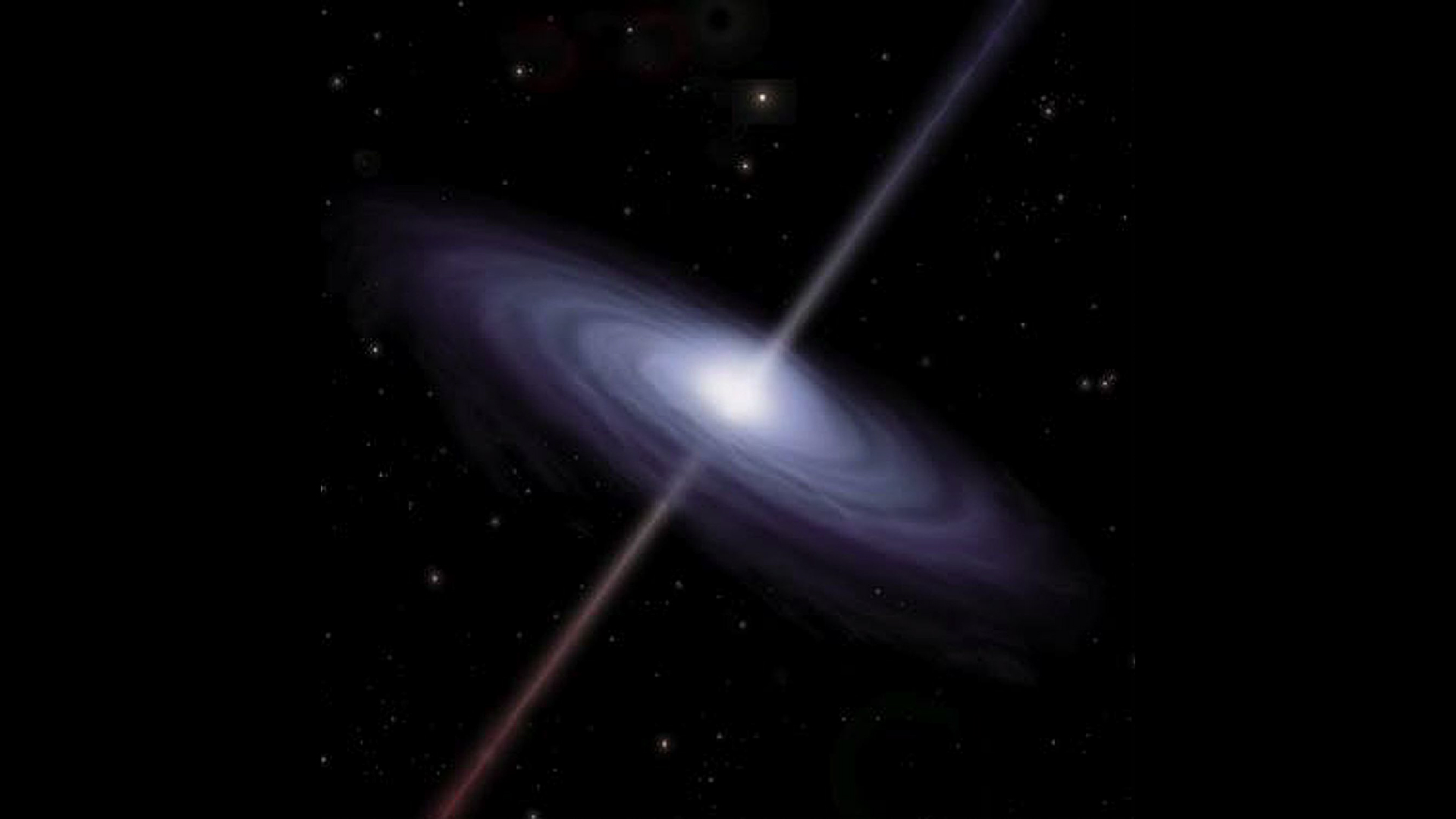Black holes from the universe's infancy could reveal invisible matter
New theoretical research suggests primordial black holes could one day help researchers locate invisible dark matter.

Dark matter could produce faint flashes of light when interacting with tiny black holes, new theoretical research suggests. These flashes could one day help scientists locate and study the mysterious matter, which has so far remained invisible.
Dark matter makes up the vast majority of the mass of almost every galaxy in the universe, but its exact nature still eludes scientists. It has gravity, but doesn’t interact with light or produce light of its own, so we only have circumstantial evidence of its existence through its gravitational interactions with everything else.
In these circumstances, researchers are desperate to cook up any scenario that might make dark matter more visible. So why not use black holes? It sounds like a ridiculous question: How could black holes, which devour any light that gets too close to them, make dark matter shine? But researchers have put together a scenario that might make it possible. They reported their findings Sept. 20 in the preprint database arXiv. (The findings haven't been peer-reviewed).
The researchers assume that dark matter can, in principle, interact with regular matter (and produce light in the process), but, for some reason, normally doesn't. Perhaps the interaction requires a certain amount of energy that simply isn’t available or is prohibited without a mediator particle doing the work. Black holes could provide the avenue needed to overcome these barriers and get the dark matter to light up.
But not just any black hole will do the trick, only ultra-tiny primordial black holes. These black holes aren’t the leftovers of giant stars but the remnants of the chaotic eras of the extremely early universe, where matter and energy spontaneously compressed to make them. Primordial black holes were first hypothesized by Stephen Hawking, but observations have so far failed to find any. If they do exist, they are extremely uncommon.
Like all black holes, primordial black holes would evaporate Hawking radiation, a strange quantum effect discovered by Stephen Hawking in which virtual particles pop up near a black hole's edge and some are able to escape. The smaller the black hole, the more radiation it emits.so primordial black holes roughly the mass of an asteroid would be emitting plenty of radiation in the present-day universe.
This radiation emitted by black holes isn’t just packets of light, or photons. It’s almost every kind of particle, including dark matter particles. As the primordial black holes decay, they emit dark matter particles that then energize any ambient dark matter particles in their vicinity, triggering a cascade that can briefly release visible light.
Sign up for the Live Science daily newsletter now
Get the world’s most fascinating discoveries delivered straight to your inbox.
The researchers predict that these signals will typically be in the form of gamma ray flashes. They are far too weak for current experiments to detect, but future observatories, like NASA’s proposed All-sky Medium Energy Gamma-ray Observatory eXplorer (AMEGO-X), might have the sensitivity and resolution needed to find these sorts of signals.

Paul M. Sutter is a research professor in astrophysics at SUNY Stony Brook University and the Flatiron Institute in New York City. He regularly appears on TV and podcasts, including "Ask a Spaceman." He is the author of two books, "Your Place in the Universe" and "How to Die in Space," and is a regular contributor to Space.com, Live Science, and more. Paul received his PhD in Physics from the University of Illinois at Urbana-Champaign in 2011, and spent three years at the Paris Institute of Astrophysics, followed by a research fellowship in Trieste, Italy.









